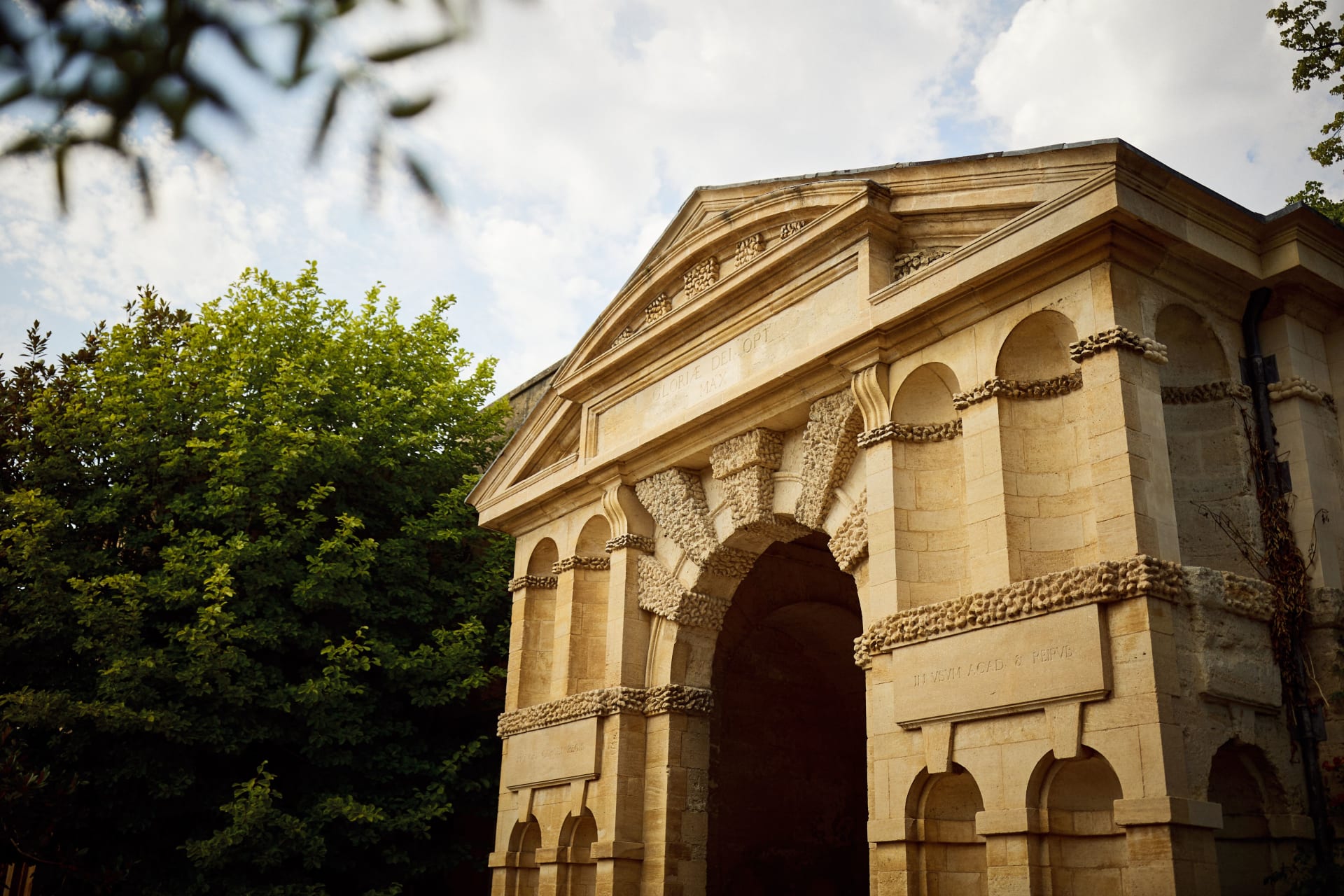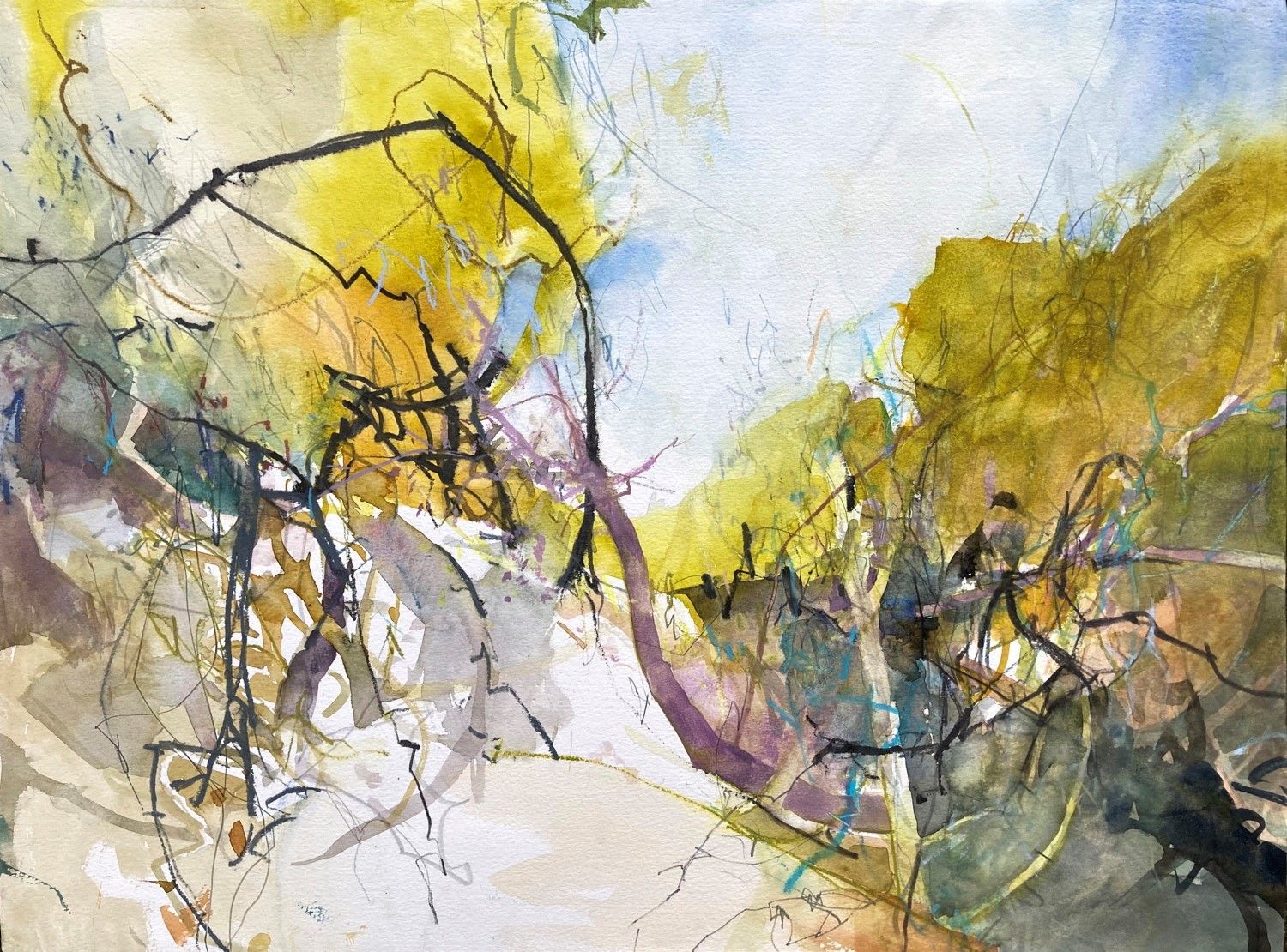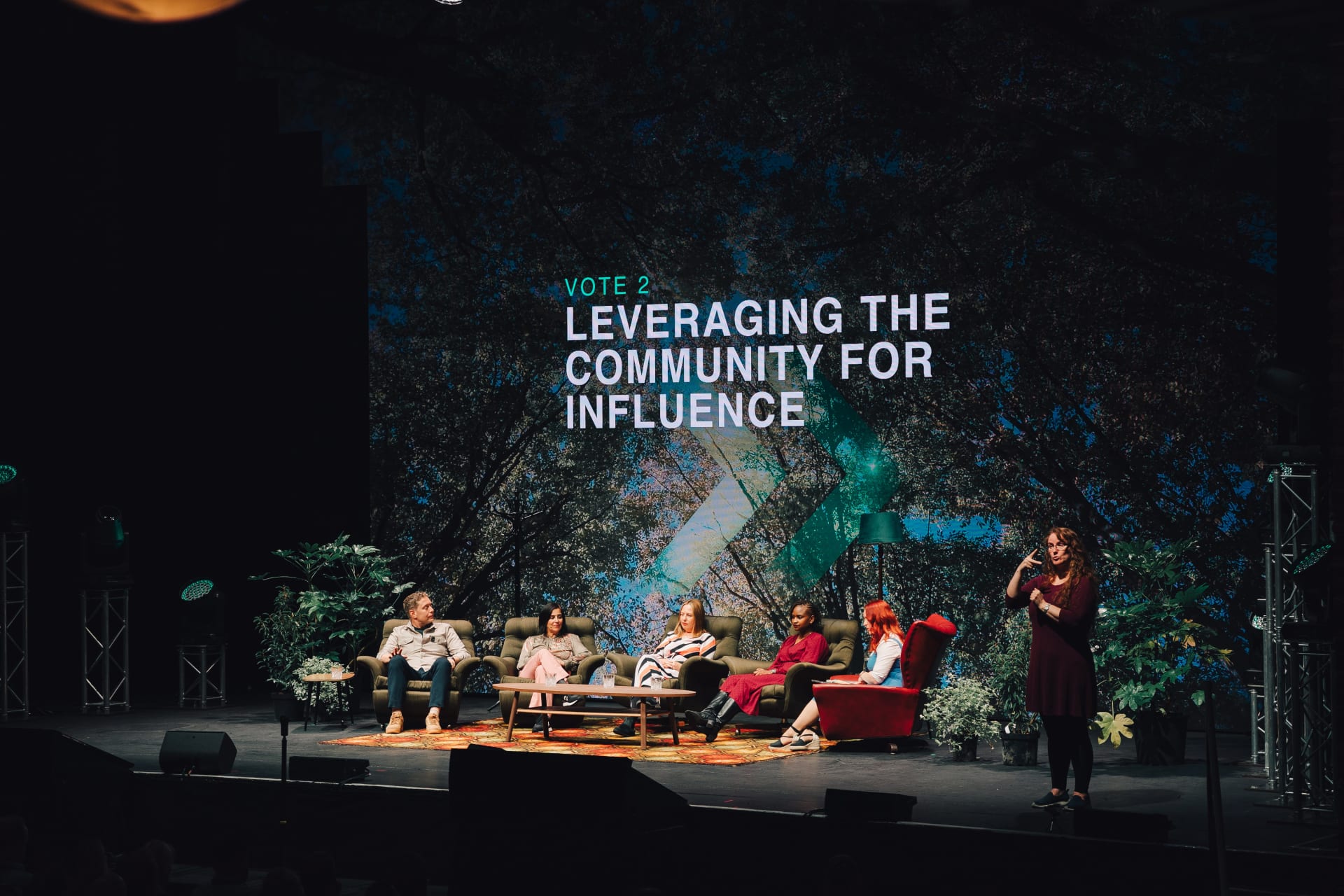Image credit: Sam Allard
The City of Oxford has been a place of education and inspiration for many writers and poets over the centuries as it did for Matthew Arnold, a student at Balliol College, who wrote Thyrsis in which he called Oxford “the city of dreaming spires.”
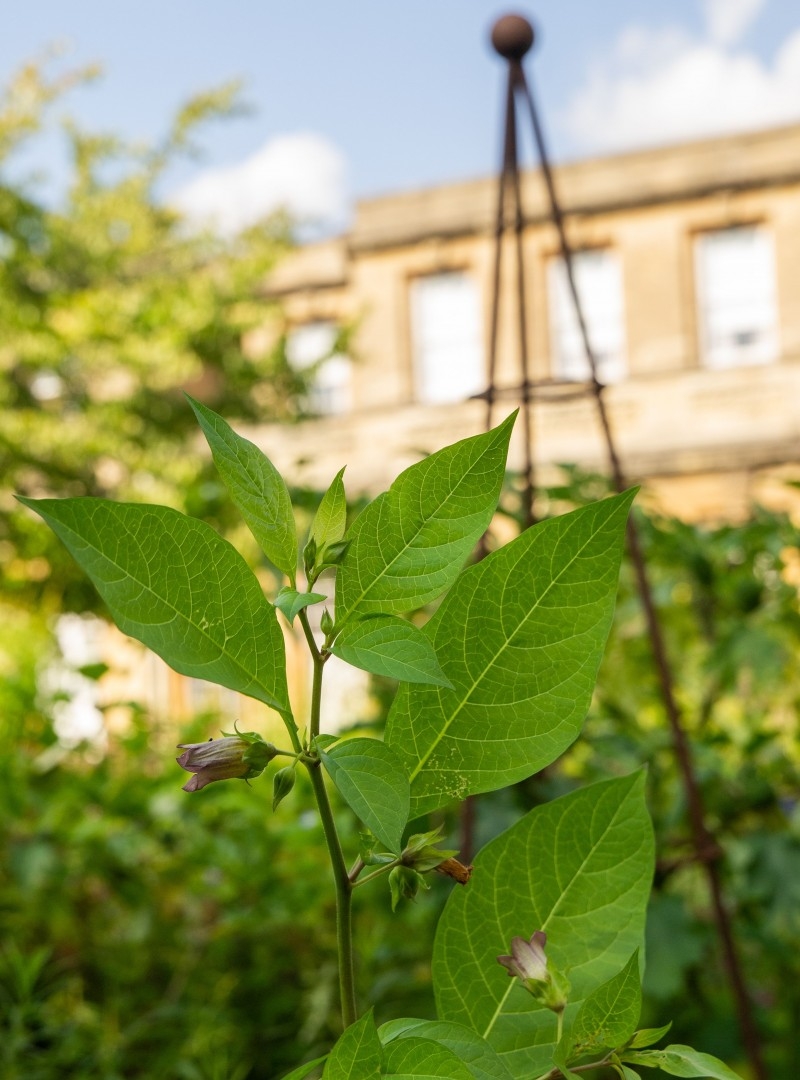 For lovers of history, literature and botany there is a very special corner in the heart of this University City. For over four hundred years, the University of Oxford Botanic Garden, one of the world’s oldest scientific gardens and the UK’s oldest botanic garden, has drawn academics, writers and visitors to its unique site bordered by the River Cherwell and overlooked by Magdalen College Tower. Founded in 1621 as a physic garden growing plants for medicinal research, over the centuries the Garden and the people who have cared for it, have ensured the site continues to retain a world-class position in terms of its history, academic location, and conservation of plants from around the world. Nowadays it contains approximately 5,000 different plant species, including those from the tropics and some magnificent specimen trees.
For lovers of history, literature and botany there is a very special corner in the heart of this University City. For over four hundred years, the University of Oxford Botanic Garden, one of the world’s oldest scientific gardens and the UK’s oldest botanic garden, has drawn academics, writers and visitors to its unique site bordered by the River Cherwell and overlooked by Magdalen College Tower. Founded in 1621 as a physic garden growing plants for medicinal research, over the centuries the Garden and the people who have cared for it, have ensured the site continues to retain a world-class position in terms of its history, academic location, and conservation of plants from around the world. Nowadays it contains approximately 5,000 different plant species, including those from the tropics and some magnificent specimen trees.
When the Garden was first created by Henry Danvers, 1st Earl of Danby, he chose a site located in the northwest corner of Christ Church Meadow, on land owned by Magdalen College (who continue to own part of the area covered by the Oxford Botanic Garden). With the ground sitting on a flood-plain, the area was raised with the addition of four thousand cartloads of ‘mucke and dunge’, creating the foundations for the first medicinal beds to be planted. By 1642 the first keeper of the new Physic Garden, Jacob Bobart was appointed and under his direction, the early medicinal beds were first planted.
As 21st century visitors enter Oxford Botanic Gardens, one of the first sights to see is the classically styled, early Baroque Danby Arch designed by Nicholas Stone between 1632 and 1633. Viewers of ITV’s Brideshead Revisited broadcast in 1981, based on the novel by Evelyn Waugh written in 1945, may recall seeing the then ivy clad stone archway in a scene with Lord Sebastian Flyte (Anthony Andrews) talking with Charles Ryder (Jeremy Irons). Waugh was a student at Oxford’s Hertford College, and he brought the main characters of his story together in the city, drawing on memories from his student days.
With its close proximity, and links to Magdalen College, many of Oxford’s prestigious writers and poets were inspired by the Garden. Oscar Wilde was a student there in the 1870s; not only did he fill his room with flowers, but he wrote using purposeful floral imagery. For others such as Baron Bernard Donoughue, a walk around the Garden each morning set them up for the day before they started their tutorials. Other modern-day writers who went to Magdalen College and sought inspiration from Oxford Botanical Garden include writer Robert Macfarlane best known for his books on landscape, nature, people and language; poet and literary editor Andrew McNeillie who wrote Arboretum and Mina Gorji, whose poem about the escape of Oxford Ragwort was inspired by the Botanic Garden.
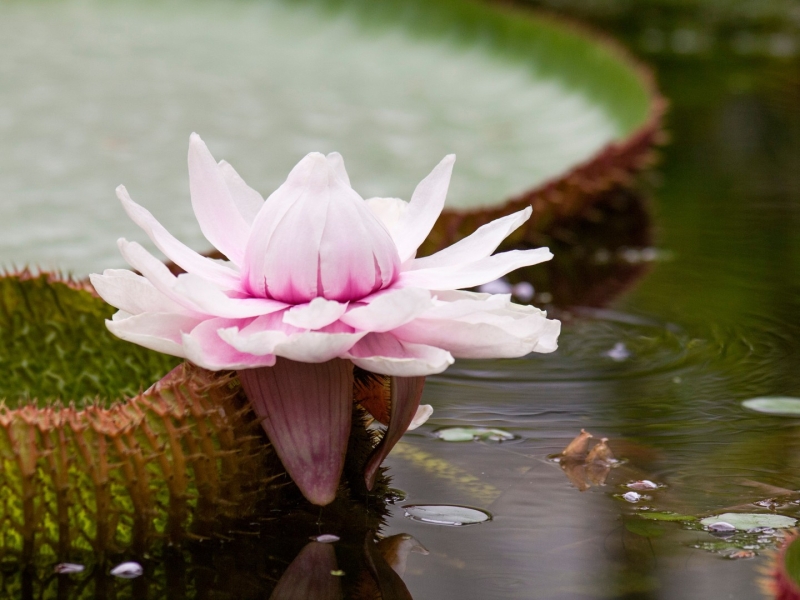 With beds containing many medicinal and poisonous plants from around the world you will see examples of plants which have appeared in popular novels such as the ‘screaming’ Mandrake in J K Rowling’s Harry Potter and the Chamber of Secrets. The mandrake, (Mandragora officinarum), has a root vaguely resembling a human figure; it was once used as a narcotic; thought to be a magical and sentient plant, when matured and pulled from the ground it’s cry was reputed to be fatal to any who heard it.
With beds containing many medicinal and poisonous plants from around the world you will see examples of plants which have appeared in popular novels such as the ‘screaming’ Mandrake in J K Rowling’s Harry Potter and the Chamber of Secrets. The mandrake, (Mandragora officinarum), has a root vaguely resembling a human figure; it was once used as a narcotic; thought to be a magical and sentient plant, when matured and pulled from the ground it’s cry was reputed to be fatal to any who heard it.
Another writer specialising in fantasy works was J R R Tolkien who lived in the City and had a long illustrious career, as a writer and Fellow of both Pembroke and Merton College. Tolkien had a love of trees and there was one in particular growing in the Oxford Botanic Garden which was one of his favourites. The large black pine (Pinus nigra) he loved sadly had to be felled in 2014 when heavy limbs fell from the tree, making it a danger to people. Seeds were taken from the tree and in June 2021, the Prince of Wales (now King Charles III), planted a tree in the Garden from those seeds.
A close friend of Tolkien was C S Lewis, author of the Chronicles of Narnia who held academic positions in English literature at Magdalen College. Author of Alice in Wonderland amongst others, Lewis Carroll (Charles Dodgson), a mathematician at Christ Church College, frequently visited he Garden, often accompanied by Alice Liddle and her family. Visitors to the Botanic Garden will be able to follow Alice’s Trail, finding plants which inspired Lewis in his book. Start at the medicinal beds to find Alice’s Drink Me potion; her first encounters with White Rabbit were in a meadow of daisies so go on to the Asteraceae (Daisy) beds. The oldest tree in the Garden planted in 1645 is a yew tree which could have inspired Carroll during the Mad Hatter’s tea party when Alice is offered tea made from the needles of the yew. (Beware, the leaves are highly toxic). Look out for the quirky Cheshire cat carving hiding in the boughs of the mulberry tree and find the rose arches in the Plants that Changed the World section or growing up walls; the Queen of Hearts’ garden was full of roses, especially red ones. Conclude your walk at the Rock Garden where botanical wonders are tucked between the rocks. If the dragon arums are in bloom, you will experience their awful fragrance.
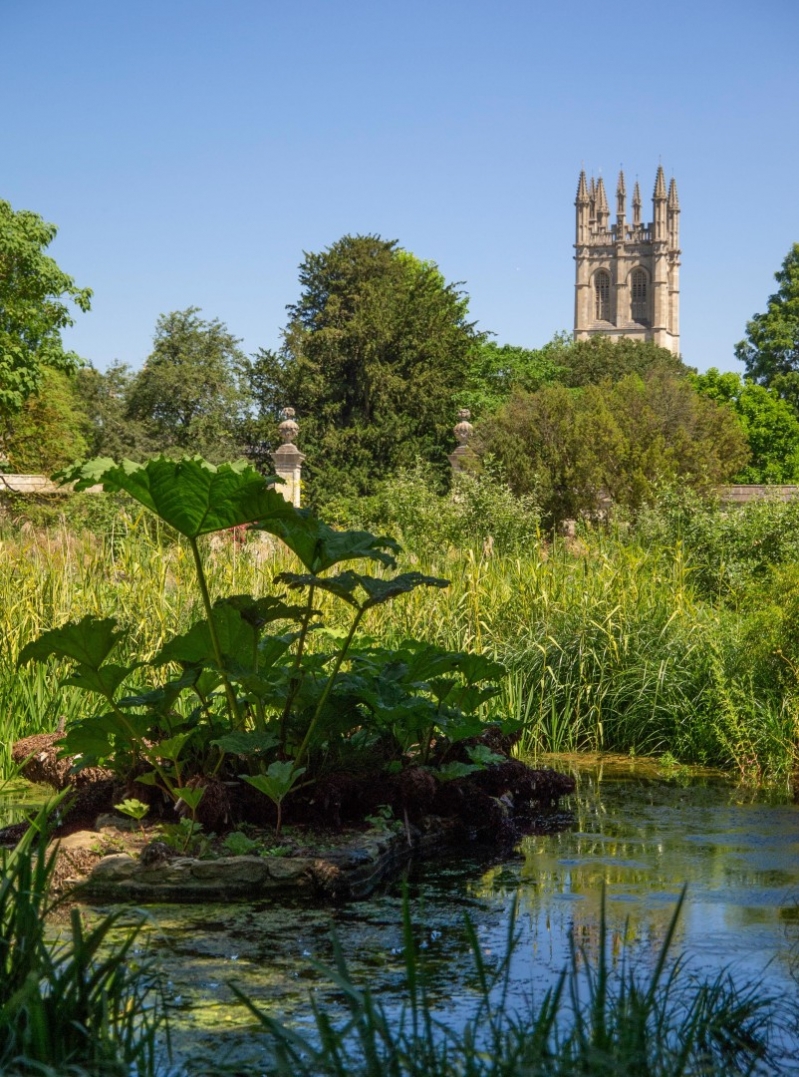 Oxfordshire author Sir Philip Pullman, CBE FRSL, wrote the award-winning fantasy trilogy His Dark Materials and The Oxford Botanic Garden has a significant link with the third book in the series; The Amber Spyglass (2000). The trilogy was televised by the BBC and is still available to watch on iPlayer. The Lower Garden, adjacent to Christ Church Meadow and bordered by the River Cherwell is where you will find a bench located in the far left hand corner. It plays a significant part in the love story between Will and Lyra and behind the bench you will see the Daemon sculpture. Created by Bristol-based sculptor Julian Warren from Metal Gnu, who specialises in wildlife sculpture, this stainless-steel creation depicts ‘daemons’ from the His Dark Materials trilogy. There is also a detailed description given of the Botanic Garden in the final chapter of ‘The Amber Spyglass.’
Oxfordshire author Sir Philip Pullman, CBE FRSL, wrote the award-winning fantasy trilogy His Dark Materials and The Oxford Botanic Garden has a significant link with the third book in the series; The Amber Spyglass (2000). The trilogy was televised by the BBC and is still available to watch on iPlayer. The Lower Garden, adjacent to Christ Church Meadow and bordered by the River Cherwell is where you will find a bench located in the far left hand corner. It plays a significant part in the love story between Will and Lyra and behind the bench you will see the Daemon sculpture. Created by Bristol-based sculptor Julian Warren from Metal Gnu, who specialises in wildlife sculpture, this stainless-steel creation depicts ‘daemons’ from the His Dark Materials trilogy. There is also a detailed description given of the Botanic Garden in the final chapter of ‘The Amber Spyglass.’
As you walk around the glorious Garden, feasting your eyes upwards to the trees with their vast assortment of leaf shapes and colours, you can understand why so many authors have been inspired by this magical corner of Oxford. Oxfordshire author Barbara Pym who lived in Finstock near Witney for many years, had an intimate knowledge of the Gardens which featured in her books Civil to Strangers, Crampton Hodnet and A Very Private Eye.
Crime writers use Oxford Botanic Gardens as the setting for murder scenes. Colin Dexter, creator of Inspector Morse later brought to life by actor John Thaw, used the Arid House where one of the characters would die in The Silent World of Nicholas Quinn. The Conservatory appeared in the ITV series of Midsomer Murder’s Orchis Fatalis and no doubt the best-selling crime novelists of all time Agatha Christie, who lived in nearby Wallingford, would have been a visitor to the Garden. She drew on her extensive knowledge of poisonous plants in many of her stories and novels.
A visit to Oxford Botanic Garden, particularly if you arrive early when they open at 10 am, is worthwhile. There will be new beautifully illustrated and very informative interpretation boards on display for the Literary Trail so to find out more, simply visit obga.ox.ac.uk/visit-garden

